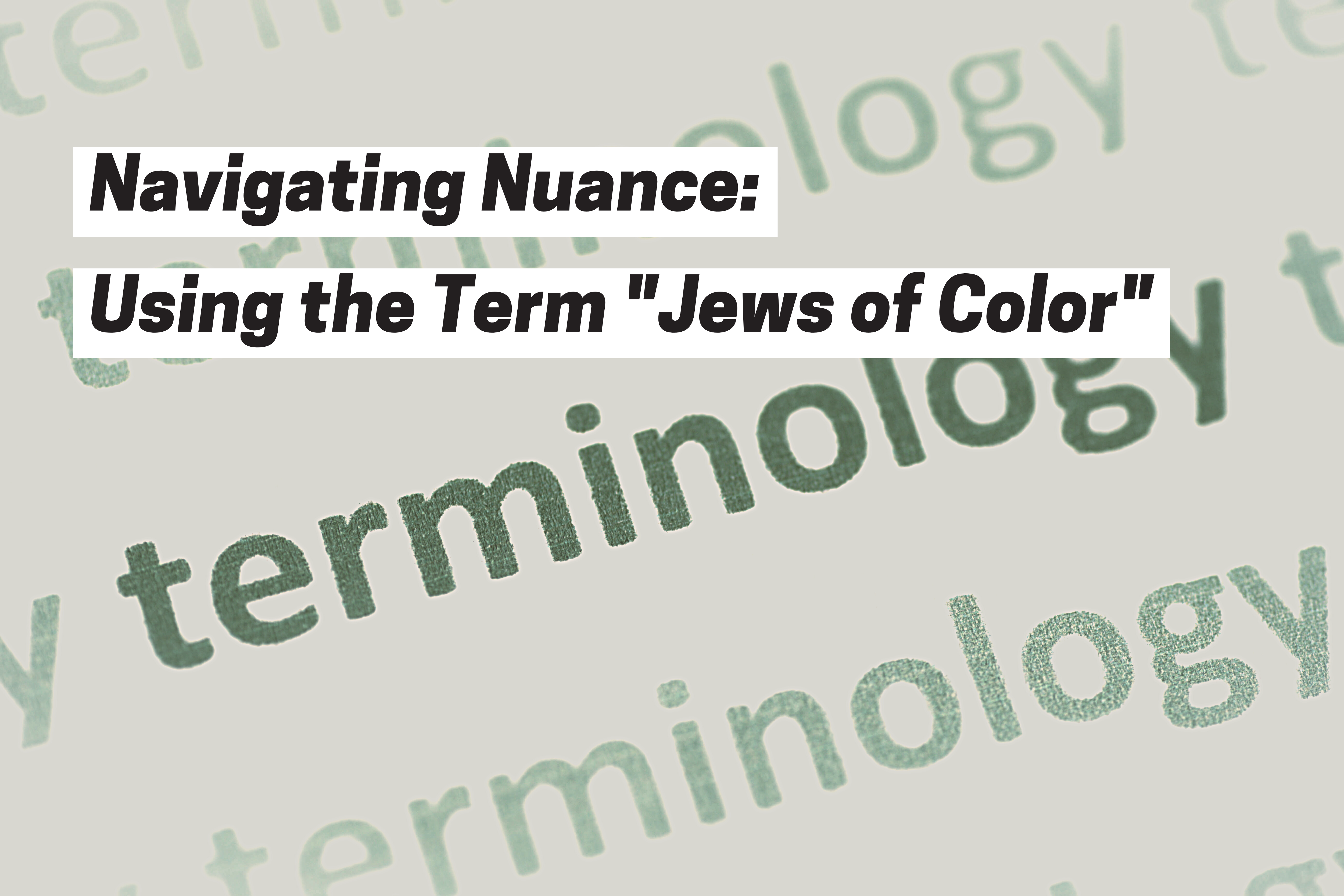
When the Jews of Color Initiative was founded in 2017, variations of the term “Jews of Color” had been in print and used among communities for over 20 years. Today, “Jews of Color” is used as an umbrella term to describe Jews from diverse racial and ethnic backgrounds, whether biracial, adopted, Jews by choice, or part of other national or geographic populations (or a combination of these). However, race is a social construct, and this term is not static. This article explores what thought leaders and research participants who are Jews of Color think about the uses and limitations for employing this term.
The term “Jews of Color” can be conceptualized as what our Beyond the Count research team calls “an imperfect, but useful umbrella term.” When developing the study, the researchers began with an awareness that identity is shaped by multiple categories; this was reflected in how participants utilized the term “Jews of Color.”
“Those who self-identified as JoC in this study used the term in a multiplicity of ways: as a racial grouping (e.g. Black, Asian, and multiracial Jews); to indicate national heritage (e.g. Egyptian, Iranian, and Ethiopian Jews); to describe regional and geographic connections (e.g. Latina/o/x, Mizrahi, Sephardic Jews); and to specify sub-categories (e.g. transracially adopted Jews and Jewish Women of Color)” (Beyond the Count, page 2).
The expansiveness of the term Jews of Color means there are a wide range of experiences and identities within the collective. At the same time, there is a common experience for Jews who belong to racial, national, or geographic groups beyond white and Ashkenazi. Because of this commonality, having a single term under which many can collectively identify can widen the net of belonging and even support the advancement of civil rights (Beyond the Count, page 2).
For Jewish People of Color, having a collective political identity helps to dismantle racism, build inter-group solidarity, and challenge the white/Ashkenazi-centrism of the U.S. Jewish community. Shahanna McKinney-Baldon, Executive Director of Edot Midwest Jewish Diversity and Racial Justice Collaborative and one of the originators of the term, explains that “using the phrase ‘Jews of Color’ can help people think about how some Jews have been targeted by racism because they are of backgrounds other than, or in addition to, European.”1
Some prefer to think of the term “Jews of Color” as a tool or a means to heralding the recognition of American Jews’ multiracial reality. In an article by Moment Magazine editor Sarah Breger, Yoshi Silverstein, Executive Director of Mitsui Collective described the term as “a means to an end…a way to uplift the identities and experiences of People of Color in the Jewish community.” 2
Because the term “Jews of Color” is fluid, the term doesn’t resonate with all People of Color who are Jewish. And there is variation in identities and experiences among Jews who are also People of Color. A Black man in his 30s who participated in Beyond the Count shared that his experience as an Afro-Latino convert “is vastly and fundamentally different from a Mizrahi Jew, yet we’re collapsed into the same category” (Beyond the Count, page 19). At the same time, many Jews from those specific groups recognize their experience being othered because of their race and experience of structural racism and do identify as Jews of Color.
The diverse experiences of racism had by those held under the umbrella term of Jews of Color are rooted in racial hierarchies, systems of privilege, and colorism that also occur in the U.S. Jewish community and the overall U.S. racial landscape. This can lead some Jews who might often feel racially “other” in predominantly white Jewish settings to also question their use of the term Jew of Color when assessing their identity in relation to, for example, Black Jews. An Asian and white biracial participant in Beyond the Count said, “I often feel like I’m not ‘of color’ enough to talk about being a Jew of Color, though I am one. It’s hardest for my identities to coexist in those moments when I’m classified into a group whose experiences I’m not sure I share and in whose marginalization I worry I inadvertently participate” (Beyond the Count, page 19).
Shahanna McKinney-Baldon explains that it matters “how we name ourselves and our experiences,” affirming that “mindful use of the term ‘Jews of Color’ can be a political act.”3 McKinney-Baldon believes defining oneself as part of a collective of racially marginalized Jews can be empowering and lead to multiracial coalitions and efforts directed at ending the exclusion Jews of Color experience “as racial and ethnic minorities within U.S. Jewish spaces.”4
Robin Washington, Editor at Large of the Forward and author of one of the earliest printed uses of “Jew of Color,” says that “the language we use to describe our experiences is ever-evolving.” We are at a time of cultural, demographic, and generational shifts occurring within the Jewish community. Differ as they may, the variety of evolving perspectives on the term “Jews of Color” all point to one thing: today’s American Jews are grappling with the concept. Like most identity categories, it is imperfect, sometimes contested, and endlessly nuanced. But it’s worth navigating.